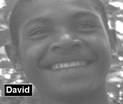
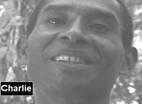
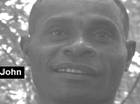





|
Whitcomb Expedition of 2004 |
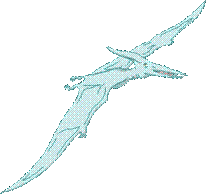

|
Searching for Live Pterodactyls in Papua New Guinea |
|
On October 15th, 2004, I returned to California, after spending two weeks on Umboi Island in Papua New Guinea. Why did I go to that remote tropical island? To investigate reports of a large nocturnal flying creature that the local people call “ropen.” I came back with notes and video from interviewing about seventeen reliable eyewitnesses who saw the elusive creature, a living creature that has inspired island legends. I found the testimonies of these people to be completely believable. There were no signs of any motivations that could put the objectivity or accuracy of their testimonies in jeopardy, with one exception: a man who was influenced by a desire for money; his testimony was distrusted locally and I dismissed it. |
|
Introduction to Jonathan Whitcomb’s Expedition on Umboi Island |
|
In late 2003, I examined much video footage taken by several Americans who were on this island in the 1990’s and in 2002. I’m a certified court videographer and have a keen interest in the use of video to demonstrate and elucidate evidence for various cases and causes. As I also had a great personal interest in the possibility that pterosaurs might still live in remote tropical areas of the Southwest Pacific, I was intrigued by a videotaped interview of a young man who claimed to have seen the giant ropen in the daytime. His description of the ropen appeared to validate the theories of investigators. After four years of gathering and analyzing these and additional testimonies, I feel that this idea is justified. |
|
In 1994, Gideon was in his early teens when he and some friends and a younger brother climbed up to a volcanic crater lake, close to their village on Umboi Island. A few months later, Carl Baugh, of Texas, and two interpreters found and interviewed the young man. Their brief session was videotaped and a copy was eventually sent to me. I was impressed with the young man’s demeanor as he described the size and features of the creature; I found him to be a credible eyewitness. He still showed signs of the fear that had caused him to run home after seeing the huge creature. I then considered this videotaped interview to be one of the most impressive evidences that pterosaurs are still living. |
|
Many other witnesses were videotaped during light expeditions in the 1990’s and in 2002 but almost all of them were nighttime sightings without detailed descriptions of what a ropen looks like. Nevertheless, together with some second-hand accounts, some investigators were convinced that the ropen is a living pterosaur. The daytime sighting by Gideon and several of his friends was exceptional and his interview seemed to suggest many large Pterodactyloid-type pterosaurs lived on this island. As his interview became better known among cryptozoologists, some considered the possibility that at least one colony of Pteranodons was there. The reason the Pteranodon was considered was because of the size. In reality, a few fossils of small Rhamphorhynchoids do not prove maximum size for a pterosaur species; maximum size may be elusive. |
|
My original purpose was to videotape a live ropen in the daylight. With one of the sidelines of my video production business being special interest videos, the possibility of videotaping a giant living pterosaur was almost irresistible. Conducting a follow-up interview with an eyewitness was only in the back of my mind when I left the U.S.. I had no idea where Gideon lived, even if he were on Umboi Island, but I was determined that no discomforts, hardships, or jungle mountains would keep me from videotaping a ropen in the daylight. But I had no idea how hard it can be to videotape a ropen. |
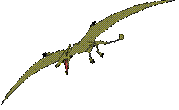
|
I was following directions and information from Paul Nation of Texas, who traveled to this island in 2002. Umboi has a population of a few thousand and an area of about 900 square kilometers. Formed from volcanic activity, the island has hot springs that remind us of its violent past. Although without community electricity, and with very limited transportation on most of the island, the people seem to be more Spartan than primitive. Some of the villagers know some English. |
|
Small-Mountain Climbing by Jonathan Whitcomb |
|
Paul warned me about land-ownership claims. When I first arrived at the village he recommended to me, I was told by a land owner that the mountain where the ropen light is often seen has “man traps.” Although these traps were not intended for Westerners but for local trespassers, I would later learn that they were only one of the dangers to those who fail to properly respect local property claims. The cost for having local guides escort me around the traps and to the top of Mount Bel (regardless of whether or not we saw any ropens) would be the same as when Westerners last climbed the mountain in the 1990’s: 3000 kina ($1100). That made the decision easier. |
|
I set my back to Mount Bel, and with my interpreter and four local men, headed west toward the lake where Gideon saw the ropen in the daytime. My first mistake was in following the advice that we start for the mountain first, before talking with the villagers of Tarawe, the landowners. Most of the porters would go back and get permission after I was well on my way. The reason for the advice was simple: my reputation that I could walk uphill only a little before stopping to rest. We later learned that getting permission to camp out was not so simple. |
|
My second mistake was in neglecting to ask about drinking water on the mountain near the lake. There were no plans to drink crater lake-water, but I had assumed that at least a few streams flowed from the mountain. The map showed many wavy blue lines that looked like streams. After we had hiked well into the bush, I was told that there was no stream on the peaks near Lake Pung. To avoid camping hours away from drinking water, we went to a “small mountain” nearby. Although my guides told me that ropens never come to this “small mountain,” we had no choice: We couldn’t go to a distant mountain without adequate drinking water. We later learned water was available near the crater lake, but it’s location is known by the Tarawe people, not the Opai men who accompanied me. |


|
Shortly after arriving at the top of the hill, some of the guides left, returning soon with a large dead monitor lizard. We strung it up onto a small tree and set up two tents nearby. A few days later I was told that this was much too small of a bait to attract any ropen. After leaving the island the next week I came to realize there was another reason it was unlikely our bait would have been taken by a ropen: There is only one ropen living fulltime in the interior of Umboi Island. A third problem with the bait was a lack of time. |
|
My interpreter and I hoped that a ropen would smell the dead lizard, eventually, and come for it one night. We planned on shining a “torch” (their word for flashlight) on the feasting ropen while photographing and videotaping it. I expected we’d be waiting at least three nights for the creature. Although ropens are said to eat fish, they’re also said to scavenge.
Three of the porters left for Tarawe; we needed permission to stay camped out on the “little mountain.” |
|
Waiting for a Ropen but not for Bandits |
|
As the sun was setting for the second night, the three ambassadors returned with bad news: The villagers of Gomlongon (where we had come from) were angry with us for going off into the bush; they wanted us to return. Worse yet, villagers of Tarawe had refused to give us permission to be where we were camped, and a couple of “armed bandits” from Tarawe were said to be bragging that they would come up to “get us.” That made the decision easier: We would leave the hilltop early in the morning. (Later, both the anger of Gomlongon and the bandits of Tarawe turned out to be only rumors.) During that night, we slept with the cameras at my side, and a machete at my interpreter’s side; when Luke was not my interpreter, he was my bodyguard. We returned to Gomlongon in the morning, where the villagers acted as if nothing had happened. |
|
Interviewing the Eyewitness Gideon Koro |
|
Within a few days, a few Opai Village men again accompanied me and my interpreter for a hike down the main road. This time, we were not looking for a ropen but for an eyewitness; we eventually found Gideon, still living at the base of the mountain where he had seen the ropen years earlier. By this time, I had heard about a stream on that mountain, but I had lost interest in mountain climbing, for I was running low on food and money. I would be satisfied just to have a good interview with this eyewitness. I was not disappointed. |
|
I knew just a little Tok Pisin, but Gideon knew a little English. Early in the interview, he surprised me. In the previous videotaped interview, it seemed obvious that the boy had seen “ten or twenty” ropens over the crater lake; on questioning Gideon myself, however, it seemed even more obvious that he had seen only one creature. It puzzled me at the time but I continued the questioning. Later, I realized what had probably happened in the first interview: When he said “ten or twenty,” he meant ropen-size, not ropen-quantity. |
|
Miscommunication was a real danger. One thing was clear: Gideon was sure that the wing-size of the ropen was “seven metuh” (over twenty feet). When I later asked about the length of the tail, he looked away as if he were imaging what the creature looked like as he calculated the tail-length. After a few seconds he replied, “seven metuh.” When I asked if the tail was the same length as the “wings,” he quickly said “yes.” I later concluded that he meant that the length of only one wing was equal to the length of the tail. |
|
Opai Village and Village Gomlongon porters who helped on the “small mountain” |
|
After I ran out of questions, Gideon made a fortunate suggestion. He indicated that he would like to talk more. We then left the crowd of villagers and walked to another area where I drew an outline picture in the dirt, using a machete. This was the beginning of a sketch-interview that greatly benefit the research.
During our verbal interview, in answer to my question about the appearance of the “mouth or beak,” Gideon thought for a second and then replied, “crocodile.” I knew crocodilians, having raised them as pets during my youth. I drew a crude crocodile-head in the dirt; Gideon approved and he continued by drawing the body. Although he had a poor view of the head, while the ropen flew over the lake, he drew for me a series of bumps or scale ridges: down the neck, back, and tail. I then videotaped the large sketch. |
|
The late-20th-Century videotaped interview had nothing about the presence or absence of a tail. My interview removed all doubt: The ropen had a very long tail. The pterosaur inhabiting Umboi Island seems to be a Rhamphorhynchoid.
As we were wrapping up the dirt-sketch interview, I was surprised to hear that two other eyewitnesses were present. I then interviewed Wesley, (a brother of Gideon) and their friend, Mesa. They verified what Gideon that the ropen had a “diamond” on its tail. I found the testimonies of these three young men to be credible, not only in content, but in the way they presented themselves.
On our way back to Gomlongon, we met a young man, Jonah Jim. He told us of his sighting of the ropen one night. He also saw the long tail. |
|
For two weeks I had interviewed about fourteen credible eyewitnesses of a strange flying creature that glows at night: This “ropen light” we investigators believe is intrinsic bioluminescence that the creature uses for purposes that include catching fish. I believe that this nocturnal ropen is the same kind of creature seen by the seven young men in the daytime over Lake Pung (but not necessarily the same individual that glows at night). Only after I had left Umboi Island, heading for the mainland of Papua New Guinea, did a simple idea strike me: A single giant ropen lives fulltime in the interior of this island. There’s no sign of any colony of ropens. Only one light is seen at a time. I believe that it’s an old Rhamphorhynchoid that has taken this island as its territory.
I left Umboi Island without any personal sighting of a ropen but with many videotaped credible eyewitnesses. |
|
Before leaving for Papua New Guinea, I had interviewed, by emails, a couple who live in Perth, Australia. After my expedition, I emailed the Australians and gave them the good news: They are not the only ones to have seen a giant flying creature with a long tail. The description they had given me correlated well with Gideon’s. But now the couple has a name for what had stunned them while they were taking an evening walk in Perth, a few years earlier: “ropen.”
Two days after I returned to Southern California, two other Americans left for Papua New Guinea. Garth Guessman and David Woetzel explored northern Umboi, finding more evidence for a giant Rhamphorhynchoid, but that’s another story. |
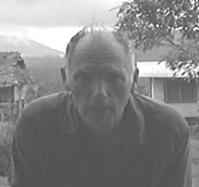
|
Jonathan Whitcomb, Certified Court Video Specialist (American Guild of Court Videographers) |
